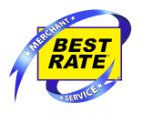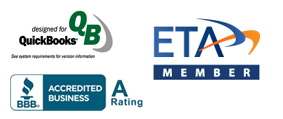The EMV compliance mandate demands that your company changes the way it does business and how it accepts credit cards. The deadline for making the EMV switch is approaching fast, but a lot of companies haven’t really started making the proper changes yet. The more you know, the easier it will be for your company to do the right thing, and to comply with new credit card regulations that can provide your customers with a higher level of security.
To make sure you’re going to be ready, here’s what you need to know about the EMV regulations and how they will affect your small business.
What is EMV Compliance?
EMV, (for Europay, MasterCard, and Visa,) is focused on the “chip” cards and the readers that are used for those cards. The compliance mandate will ensure that the cards’ internal mechanics are updated properly and the card readers that accept chip cards will also have to be updated.
Why the Change?
The main value from these updates comes from a lower risk of data breaches. Merchants that utilize EMV technology will lower the chances that a hacker will breach customer data and the data they might manage to collect from companies will be completely useless to them.
What do Merchants Have to Do?
Merchants do have some responsibility, in that they have to keep up with changes and upgrade to the EMV technology. If they fail to comply, it could pose a financial risk if a card is used fraudulently to buy something at their business. If this were to occur, the repercussions could cost your company a lot of money since you as the merchant would be financially responsible for the transaction. With the EMV deadline coming up quickly, making sure your credit card processing is up to date is vital.
What does this mean for me?
The shift in liability that the EMV mandate involves can change how you conduct business. As long as your software and hardware stays up to date, the fraud liability your company has to take on will go down significantly compared to what it is currently.
When fraud occurs, the new standards will shift the liability onto the party that provided “lesser” technology. When you keep things updated, that party won’t be you. The lower your fraud liability, the better. This is because it keeps your company from suffering financial losses for the security breaches of others.
Still, EMV isn’t perfect, and it doesn’t mean that nothing can possibly ever go wrong. You have to maintain security at every point-of-sale terminal and keep your workplace operating in a way that protects consumer information.
Then, when you switch to the EMV standards, there may be some training needed to ensure that everyone follows the new protocol properly.
If you haven’t switched over to EMV technology yet, there is still time, but if you keep your old technology past October, 2015, any transactions that are swiped and found to be fraudulent become your responsibility. Making the switch is a great way to help protect your company’s financial future. Contact the account experts at Best Rate Merchant Service and they will get your business secure and compliant today! (866) 577-1593.








